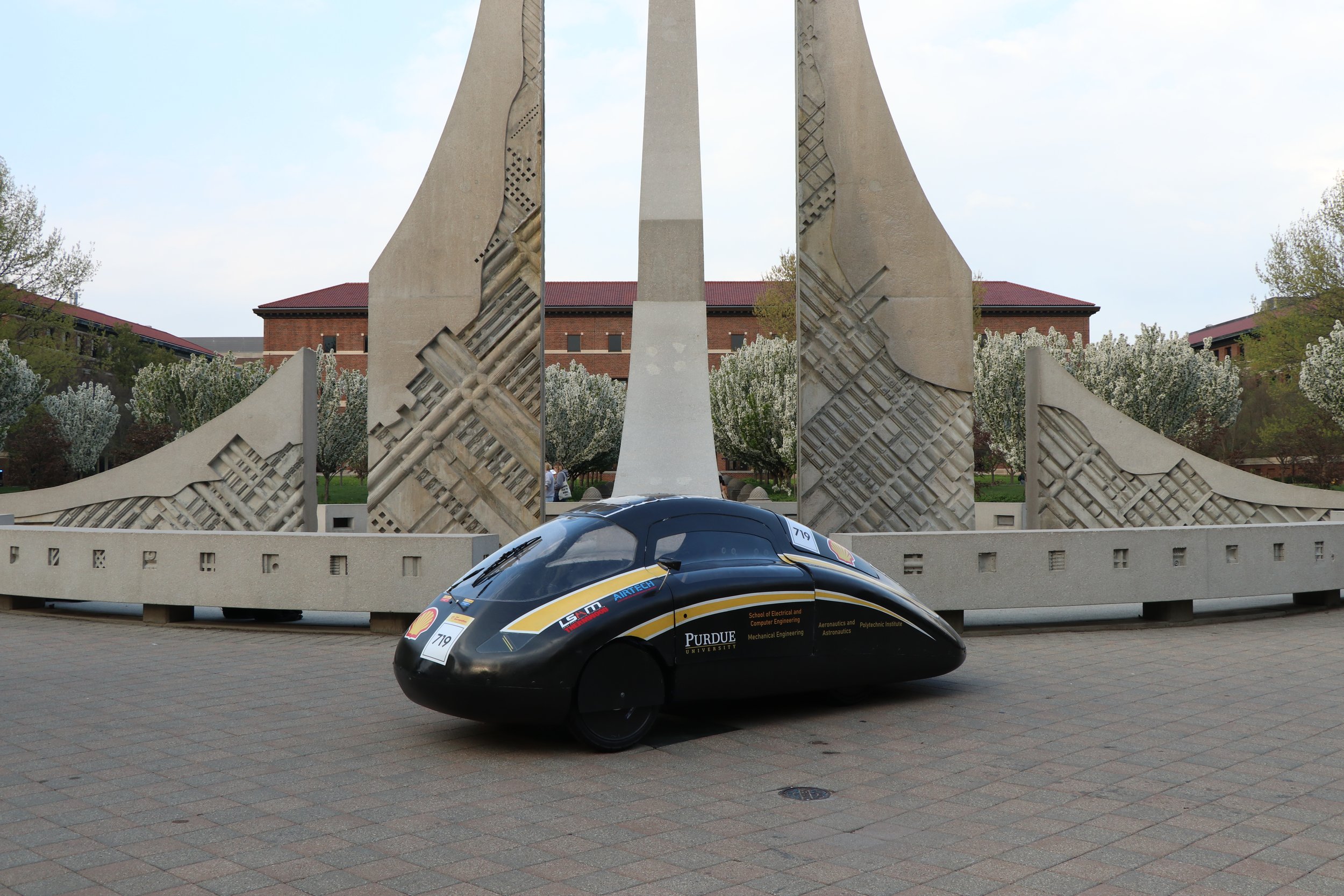Legacy
Over the decades, Purdue Solar Racing has grown from humble beginnings into a successful and innovative collegiate solar car team. Our mission to build world class solar vehicles while spreading the benefits of sustainability has continued to push us to innovate.
We have designed 11 vehicles to date and competed in races including: Formula Sun Grand Prix, American Solar Challenge, and Shell Eco-Marathon.
Our Races
2023 Shell Eco Marathon Podium- 2nd place in Battery Electric
2013 Shell Eco Marathon Winner - 1st place in Urban Concept
2011-2012 Shell Eco Marathon Winner - 2 time 1st place in Battery Electric
2008 - 2010 Shell Eco Marathon Winner - 3 Time 1st place in Solar Prototype
2003 American Solar Challenge - "0-66" Award Recipient
Apollo - 2023
2023 Shell Eco Marathon Podium- 2nd place in Battery Electric
Apollo is PSR’s 3rd urban-concept and 11th overall vehicle. With an equivalent efficiency of 1700 mpg. In addition, Apollo features two side doors, rear view mirrors, windshield wipers, trunk space, and regenerative breaking.
Renatus - 2018
Renatus, Latin for 'rebirth,' is Purdue Solar Racing's tenth vehicle. With the footprint of a small SUV, Renatus weighs only around 800 pounds and estimated speeds of up to 65 mph.
Navitas - 2013
2013 Shell Eco Marathon Winner - 1st Place in Battery Electric
Navitas (for ‘energy’) was our second iteration of an Urban Concept, with an equivalent efficiency of 2,630 mpg. Major efficiency gains came from the addition of carbon fiber wheels, a space-grade solar array, and solar concentrators to maximize energy collection.
Celeritas - 2011
2011 Shell Eco Marathon Winner - 1st Place in Battery Electric
Celeritas (Latin for 'swiftness') was our first Urban Concept vehicle built, with features such as regenerative braking and plug-in charging capabilities. Celeritas made several media appearances, including coverage of its unveiling by WFLI News.
Pulsar - 2008
2008-2011 Shell Eco Marathon Winner - 4 Time 1st Place in Solar Prototype
U.S. Science and Engineering Festival Representative for Purdue University
With an equivalent efficiency of 4,913 mpg and a 300W power output, PULSAR made many appearances in local and national media.
SPOT II - 2005
2006 Tour of Indiana Participant
As an evolution of the 2003 SPOT vehicle, SPOT II featured enhanced usage of structural composites for while weighing only 430 pounds, yet reaching speeds over 60 MPH.
SPOT - 2003
2003 American Solar Challenge - "0-66" Award Recipient
S.P.O.T. (Solar Powered Overland Transportation) represented a quantum leap in ruggedness, aerodynamics, and composite construction. With cruising speeds of 45 MPH, SPOT traveled over 2,000 miles from Chicago to Los Angeles.
Heliophile Pi - 1999
2001 American Solar Challenge Competitor
Heliophile Pi was one of the lightest vehicles of its competitors. During the race, Pi had its best segment finishes of sixth and twelfth. Additionally, PSR was awarded the Sportsmanship Award for the helpful hand lent to Ohio State after an accident.
Heliophile 2.5 - 1997
1997 Sunrayce Competitor
Building on the success of 1995, the team opted to focus on improved aerodynamics for the 1997 Sunrayce. Although resulting in a disappointing finish, the knowledge gained regarding solar car aerodynamics and composite construction would be of significant benefit in the future.
Heliophile 1.5 - 1995
1995 Sunrayce Competitor - 17th Place
Heliophile 1.5 (Greek for "Lover of the Sun")
Boilermaker Solar Special - 1993
Purdue University's venture into the competitive field of solar racing began in 1991. Although inexperienced and small, the members began a trend with incredible capacities. This, however, was a building point and a chance to learn.












